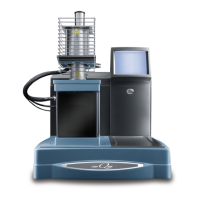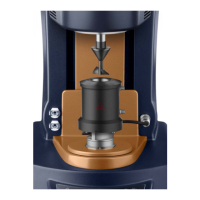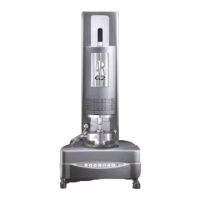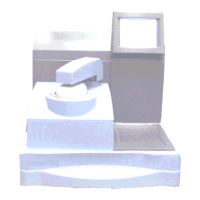TA I
NSTRUMENTS
TGA 2950 B–33
Hi-Res
TM
Option
weighted toward this cluster of points and may
be nearly vertical or even fall off the curve
entirely.
Improved results can be obtained by moving the
transition start and stop limits farther away from
the transition so that the onset and endset
windows remain completely on the baseline
portion of the curve. If this fails to help, the
transition tick marks can be placed manually on
the curve.
Derivative Plots
Another data analysis problem caused by
unequally spaced temperature data points is
unusually shaped or flattened derivative plots
versus temperature. This is due to the assump-
tion that data points are equally distributed over
a moving window (the smoothing window) used
to compute the derivative. If the derivative
smoothing window is too wide, derivative peaks
will flattened and apparent resolution will be
reduced. If the window is too narrow, derivative
peaks will be needle sharp and noisy.
The default smoothing window is 0.2 minutes
for derivatives with respect to time (%/min and
%/min/min) and 10
°
C for derivatives with
respect to temperature (
°
C/min and
°
C/min/min).
For typical Hi-Res
TM
TGA scans, the quality of
derivative plots with respect to temperature can
be improved by decreasing the temperature
window to 5
°
C. If extremely sharp results are
desired, try a smaller window. Less than 1
°
C is
not recommended. The smoothing window for
time does not normally need adjustment. If the
time derivative seems particularly noisy, try
increasing the window to 1 minute.

